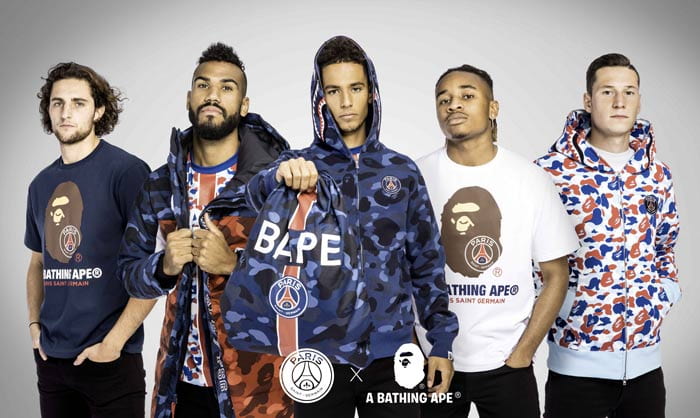
The king of sports from the 70s and 80s took the leap and put more importance to fashion in football, not only with the introduction of a third / alternative kit, with a more commercial rather than functional purpose. One of the intentions was that it will be liked by the average supporters.
The fact that fans started using their football shirts to go out made it become a trend called, terrace fashion. Up until today this trend continues and nowadays is much more important for the brands than back in the days. When fans started using football shirt to go out brands like Nike, Adidas, Puma, Kappa, Umbro, etc, saw an opportunity in the market. These brands rapidly started making more football clothes, not only t-shirts, but also tracksuits and off the pitch clothes. From one day to another an industry was developed.
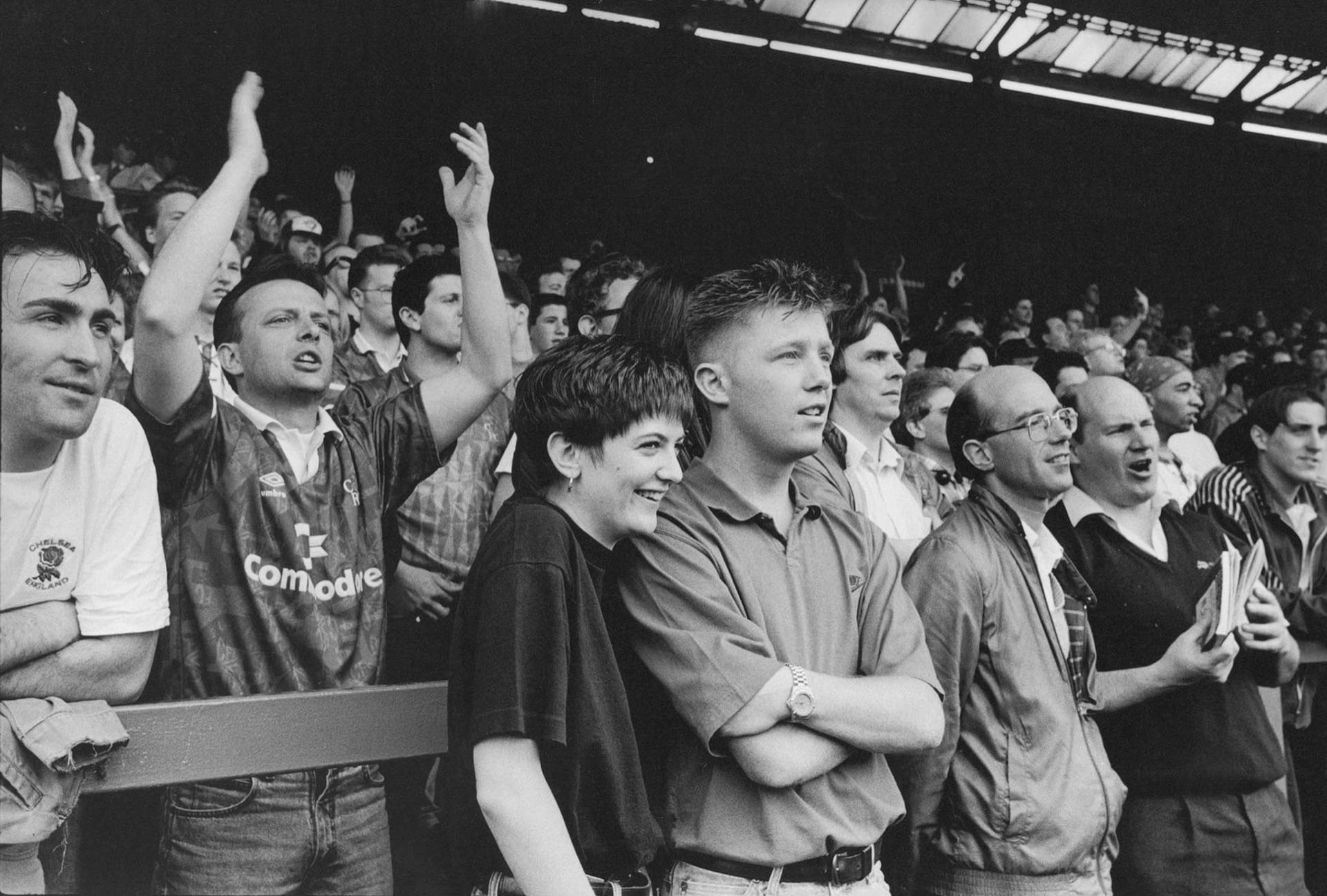
From the 80s, football went to a different level and became much more commercial. Football in its beginnings was a sport that men did in parallel to their jobs, no one was dedicated only to football. When the sport began to become popular worldwide, men realized that they could quit their jobs to become footballers. The first player to do this was a Scotsman named Fergie Suter in 1876.
The introduction of sponsors in the jerseys and brands offering money to the best players to wear their boots turned football into a business. In 1974, Johan Cryuff, refused to wear the uniform of the Netherlands national team because it was of the Adidas brand while he had a contract with the German brand, Puma.
Puma 4 years before had paid the superstar of that moment, Pele, 120.000 dollars to wear his boots and that at the beginning of the final of the 1970 World Cup he would bend down to tie them and thus get a close-up of the boots and win the attention of all viewers in the world.
The 80s were just the establishment of the brands, they simply added their logos to the t-shirts but kept a very classic and basic t-shirt designs. The most common was either a plain t-shirt in one colour or a t-shirt with vertical stripes of two different colours. The change started towards the end of the decade, a very iconic t-shirt was done in 1988 for Netherlands national team which lead the way to the change.
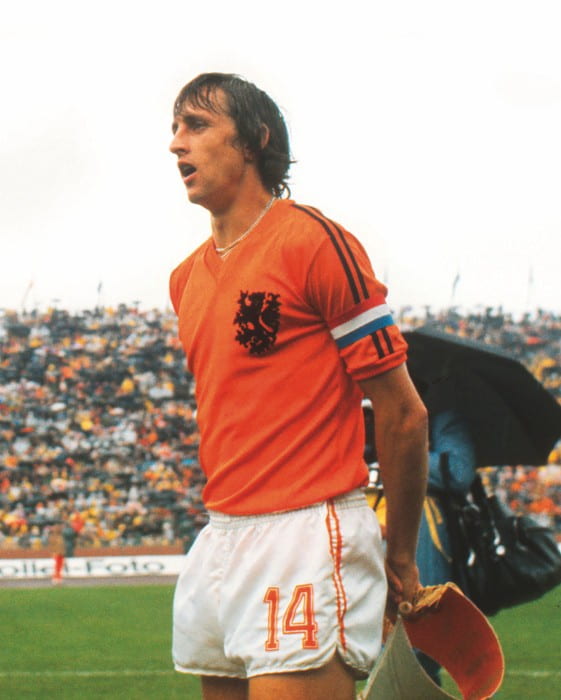
The 90s was the time to innovate, the designs became more extravagant, in many cases because they wanted the fans to like it. A good example of this was 1996 when the English brand, Umbro, designed a grey kit for Manchester United, the intention of the brand was for the fans to wear it with jeans and it really worked and was a success with the fans. The problem was on the pitch. The critical point of the shirt came in a match against Southampton in which Manchester United was losing 3-0 at halftime. It was being a disastrous game for the English Giants so their coach, Sir Alex Ferguson, ordered his players to change their kit at halftime for the second kit that was blue and white. The reason that both players and coach gave was that they were not able to see their each other on the field, so it was impossible to play well. The second half of the Red Devils was better as they managed to materialize a goal; the match ended 3-1.
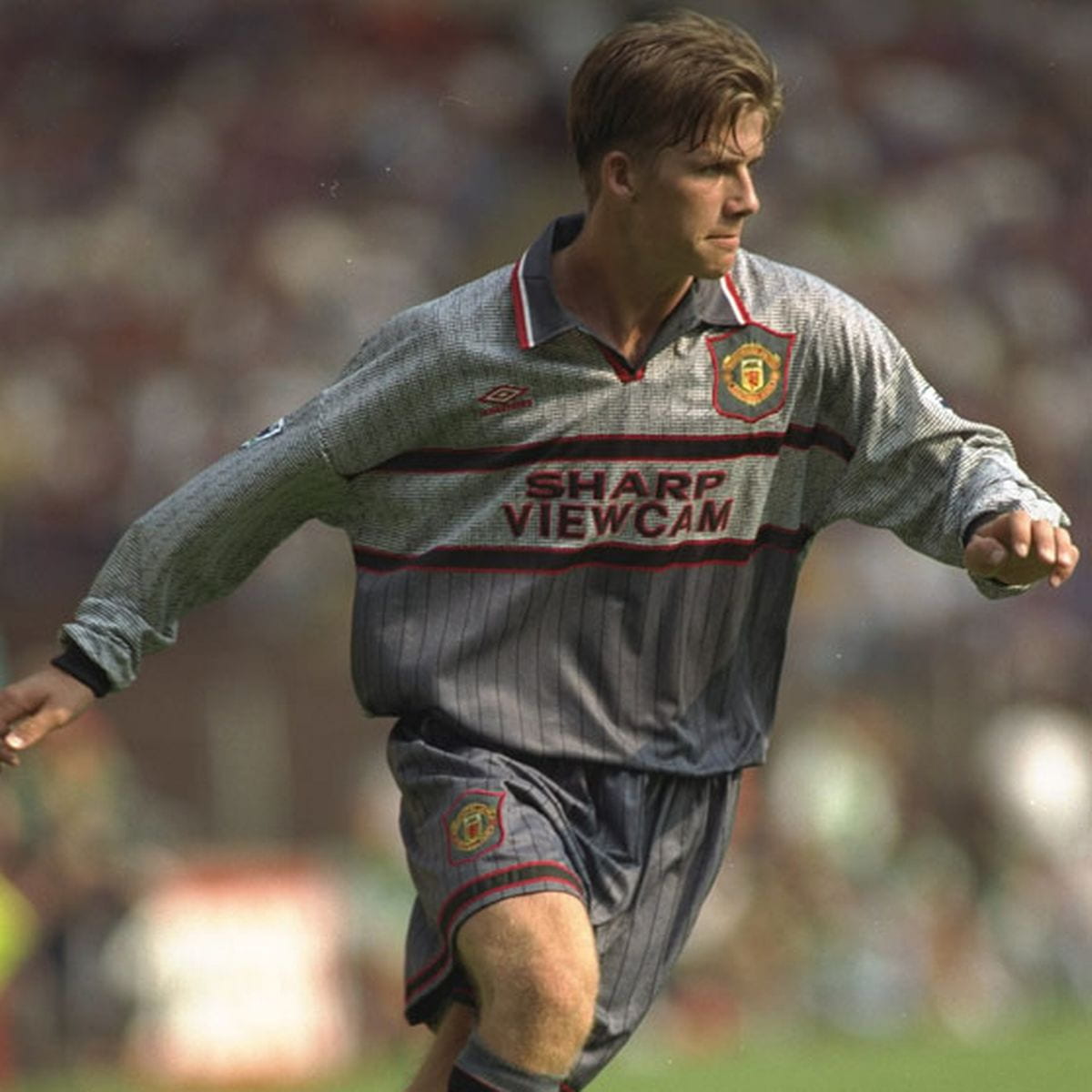
The retro t-shirts.
In the 21st century, this is the new trend. Every soccer lover yearns to get hold of one of the mythical jerseys in football history. There are a small amount of physical stores that sell this type of jerseys, one of the best known is, Classic Football Shirts UK, which sells official jerseys from past seasons and even jerseys worn by professional players.
Various web pages are also dedicated to selling these shirts, sometimes these are usually replicas, so they have a more affordable price. The retro t-shirt business is in antiquity, the older it is, the more value it has. The average price of a 2000s shirt is £ 150.

Urban fashion in football
The best streetwear and luxury clothing brands have decided to break down barriers and expand into new markets and unite the two worlds. Brands like Jordan, which is a brand created by Nike, already collaborated with the Parisian club, PSG, in the 2019/20 season and now in the 2020/21 season they are doing it again, they continue to create a sensation with their designs. A bestseller not only with the game jerseys but also the entire clothing collection for before and after the game.
Palace is a streetwear brand founded in London in 2009, its first intention was creating clothes for skateboarding lovers. Due to a change in the society they became a high end streetwear brand. In 2019 Palace decided to get together with Adidas and “the old lady” to create a clothing line in addition to a match shirt that will act as a third kit for the Italian club.
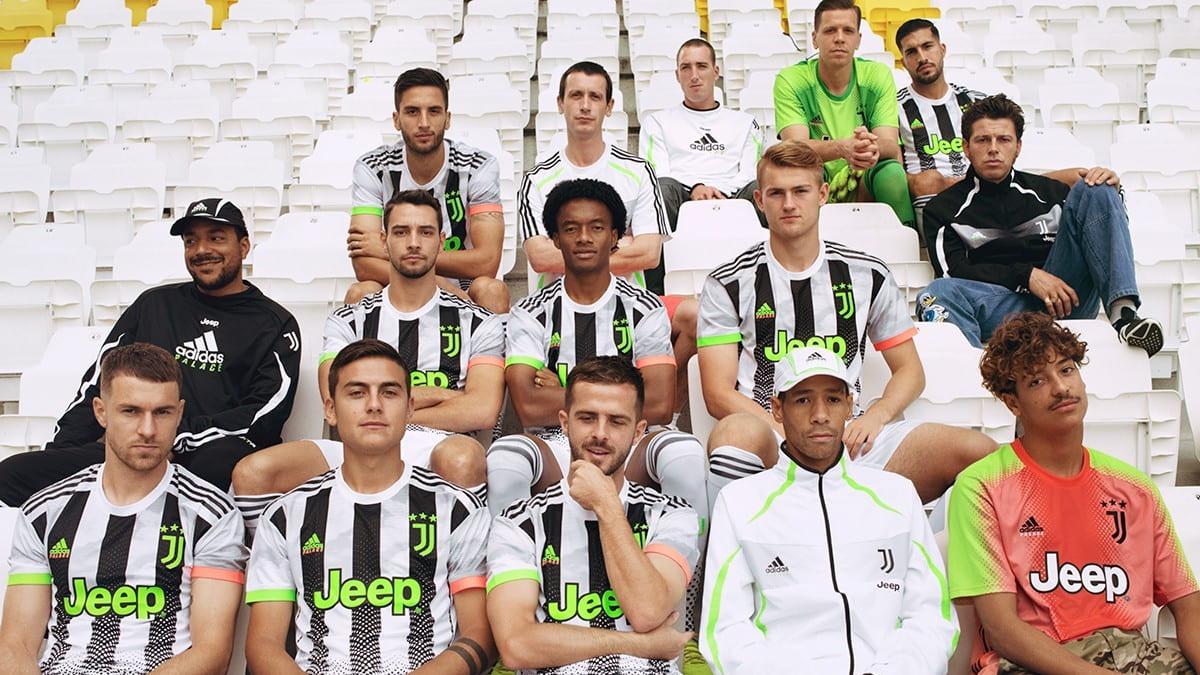
From singer to designer
A music celebrity as he is, Pharrell Williams, sponsored by Adidas launched a clothing collection (one of his passions) from the hand of his personal brand, Human Race. The striking thing about these shirts is that they are drawn by Pharrell himself, based on historic kits.
This collection was launched in the 20/21 campaign and consists of 5 football jerseys that will match all 5 different tracksuits – Adidas X Human Race –

1) Arsenal F.C.
Based on the mythical ‘Bruised Banana’ which was worn by the London team between 1991 and 1993.
2) Manchester United F.C.
Inspired by the musical era that the English town was going through in the 90’s. The snowflake design came to life.
3) FC Bayern München
Adidas’ three stripes in blue on the shoulder bring to life the shirt worn by the Bavarian team between 1991 and 1993.
4) Real Madrid C.F.
An old collaboration made by the German brand with the Japanese fashion designer, Yohji Yamamoto, in 2014. ‘The dragon t-shirt’ , as I was called, was the one selected by Pharrell to return to the market.
5) Juventus F.C.
The pink design released in the 2015/16 season was recreated as it is considered one of the most popular kits from ‘La Vecchia Signora’.
